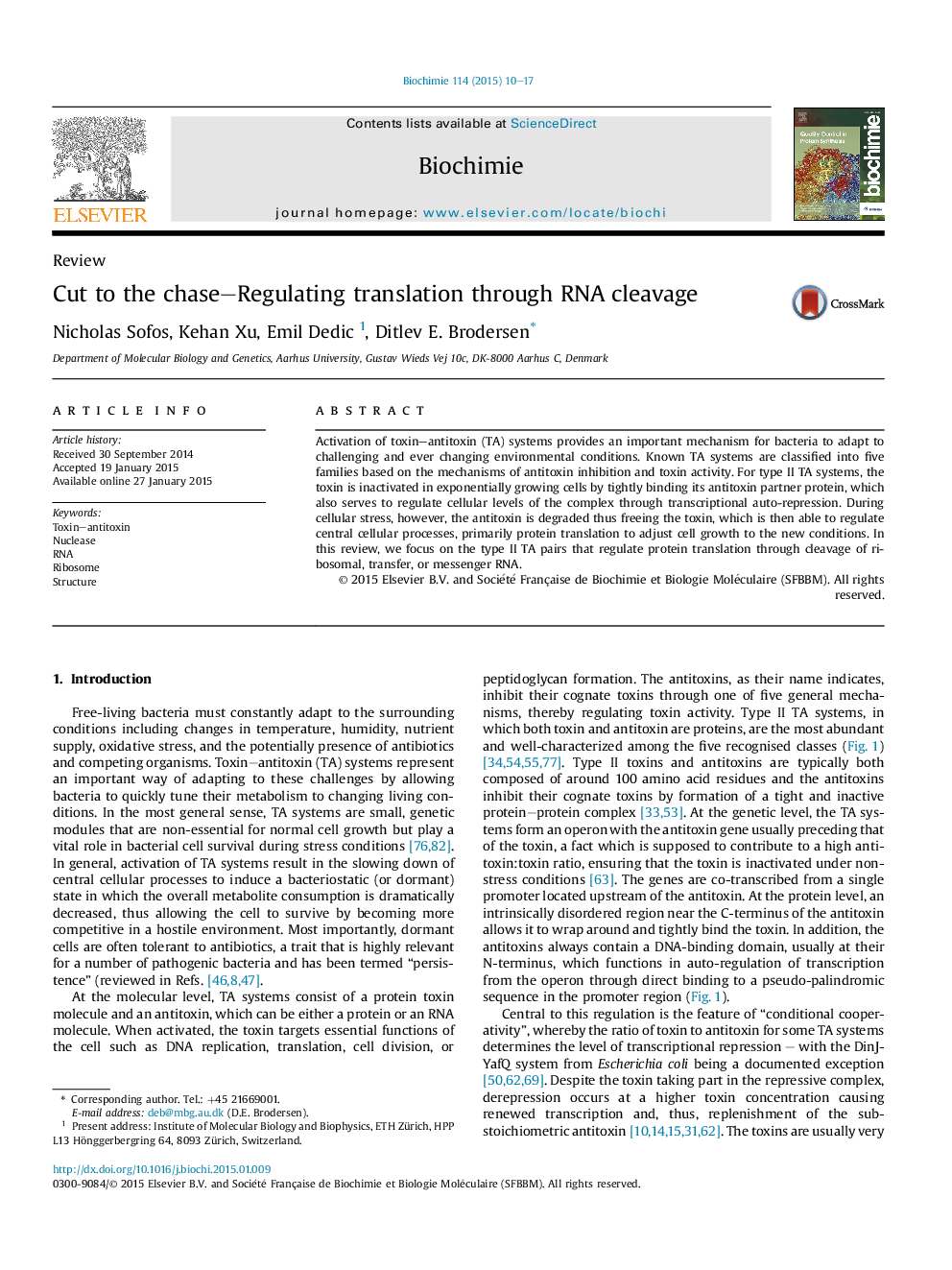| Article ID | Journal | Published Year | Pages | File Type |
|---|---|---|---|---|
| 8304864 | Biochimie | 2015 | 8 Pages |
Abstract
Activation of toxin-antitoxin (TA) systems provides an important mechanism for bacteria to adapt to challenging and ever changing environmental conditions. Known TA systems are classified into five families based on the mechanisms of antitoxin inhibition and toxin activity. For type II TA systems, the toxin is inactivated in exponentially growing cells by tightly binding its antitoxin partner protein, which also serves to regulate cellular levels of the complex through transcriptional auto-repression. During cellular stress, however, the antitoxin is degraded thus freeing the toxin, which is then able to regulate central cellular processes, primarily protein translation to adjust cell growth to the new conditions. In this review, we focus on the type II TA pairs that regulate protein translation through cleavage of ribosomal, transfer, or messenger RNA.
Related Topics
Life Sciences
Biochemistry, Genetics and Molecular Biology
Biochemistry
Authors
Nicholas Sofos, Kehan Xu, Emil Dedic, Ditlev E. Brodersen,
